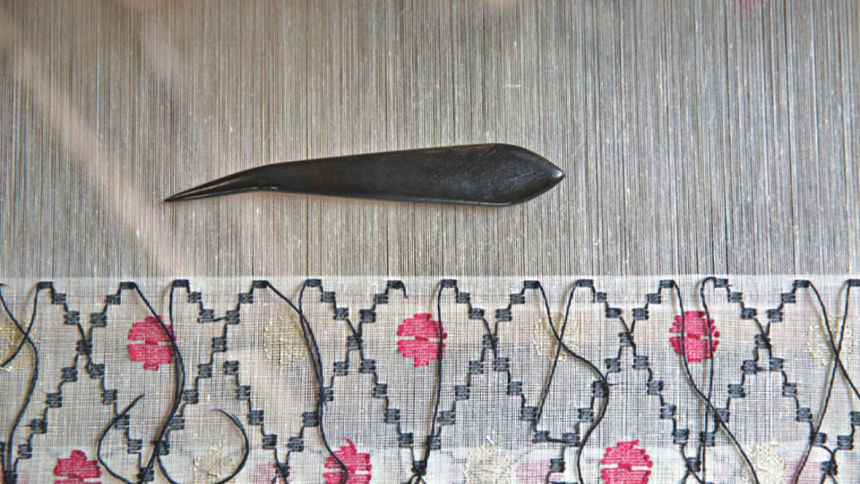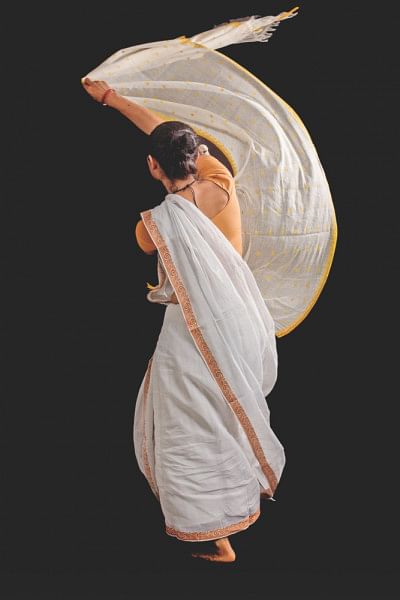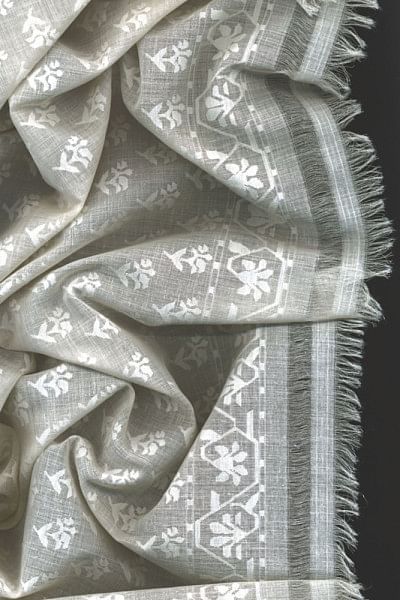Muslin story

Muslin was the attire of kings and queens, a fabled fabric which was the pinnacle of European fashion in the 18th and 19th centuries. Originally called 'mul-mul', it was named by Marco Polo after the large cotton trade through the town of Mosul in Iraq.
Rare, delicate, fine and described as 'woven air', muslin was the most sought-after textile and at its height had reached all corners of the globe.
During the 2nd and 3rd centuries India's fine cotton was well known as 'Gangetic Muslin' was treated as a tribute, handed over from one royalty to another, forging friendships and cementing alliances. With the Muslim conquest of Bengal in the 12th century, trade and specifically textiles received a large boost.

After the arrival of the Portuguese in late 15th century, a small amount of Indian textiles started to travel directly to Europe, which rapidly increased after the Dutch and the British joined in the Indian Ocean trade from early 17th century.
Muslin travelled the earth, bringing prosperity to its traders, specially the East India Company, 75 per cent of whose wealth would at one time come from this single item. In the 18th century Bengal's textiles had grown from 16 per cent to 55 per cent of the EIC trade and India was contributing an astonishing 25 per cent of the world economy, with England at less than 2 per cent. But muslin's industry was exploited and extinguished by a system of exploitative regulations brought in by the British rulers and a wave of new technology where the domestic cotton industry was replaced by their machine-made fabrics.
By 1880, the lustre of Bengal's muslin's had faded and muslin was allowed to die.

Today muslin's unique cotton plant, the phuti karpas which grew on the banks of the Meghna and its tributaries, is believed to be extinct.
The unique yarn is not spun and the weaving techniques used on jamdani (a last surviving variety of muslin) are all that is left of our lost art, even though coarser threads are used now than the fine ones of the past.
Sadly, there are few credible records on muslin by Bangladeshis or any appropriate samples of its finery in our national museums. Its story is written by outsiders and the best examples of its historic products are kept in museums abroad.
Drik, over the past two years, has extensively researched the topic with the assistance of curators, weavers and artisans both internationally and at home. Their efforts will culminate in a public exhibition at the Bangladesh National Museum.
Besides original artefacts of muslin, a photo book, documentary film and discussion sessions will also be launched. Muslin items of high count, 300 and above will be on display.

The goal is to retell our story in our words, and to inspire the revival of a new-age muslin. Large volumes of fine cotton cloth are shipped from India, Turkey, USA, and China to other countries in Europe and Japan using the same brand name, as it brings an instant association with luxury and fineness.
It is expected that if Bangladesh can re-establish itself as the original source of this diaphanous material, it will be of tangible benefit to our handloom industry, and also our national identity. Our country, presently defined in textiles within the narrow boundaries of a readymade garment industry with its accompanying controversies, can redefine its profile as also a provider of the finest textile, bringing pride and recognition to its true heroes, the craftspeople of Bangladesh.
By Saiful Islam
Photo: Shahidul Alam (Drik)

 For all latest news, follow The Daily Star's Google News channel.
For all latest news, follow The Daily Star's Google News channel. 








Comments